Arequipa is on the altiplano, the largest area of high desert plains in the world. It is overlooked by the snow-covered volcano El Misti, and is called the White City, perhaps because the old city was built from a local white volcanic rock, sillar. Any way up, it’s beautiful, if cold.


We are here for a look round, and as a staging post for a three-day trek into the Colca Canyon, about 5 hours away by minibus. Before the trek, we tour the Monasterio de Santa Catalina, a colonial-era convent. This is so large, it’s actually a city within a city. It’s been open to the public since 1970, and is still an active convent, although the nuns have moved into a newer section which is closed to the public. The interior is fantastic: walls and corridors are painted blue and red, and the play of light is marvellous. This is the corridor between the Novices Cloister and the Orange Tree Cloister.
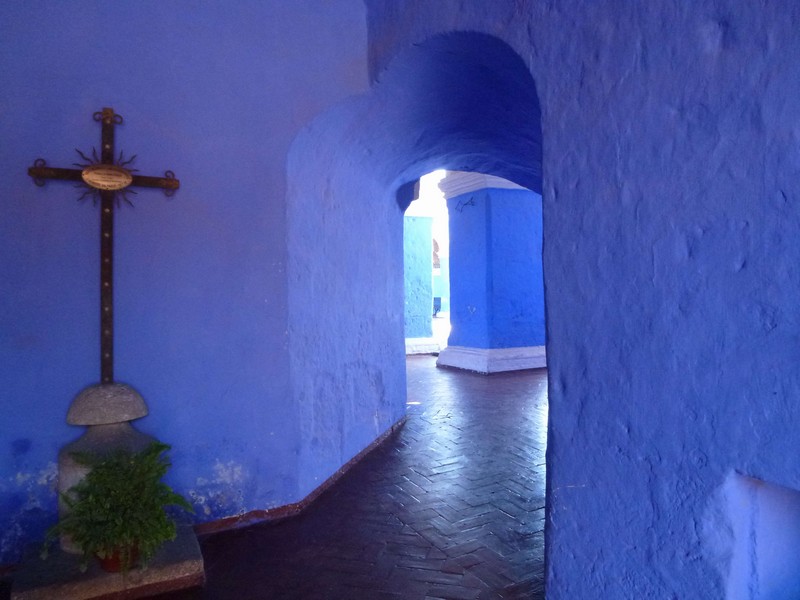
There are six streets inside the monasterio, named after Spanish towns. The nuns had their own individual cells, some with courtyards of their own, and most with small kitchens.


The juxtaposition of blue and red is glorious: the blue reminds me of Nubian houses in Egypt. I often think it’d be a good colour for our house, but it just wouldn’t work without the strong sunlight.

The order is Dominican, and was established in 1579. Most of the early nuns were very rich, retained servants, and apparently did not live an appropriately contemplative life. In the 1870s, a new, strict Mother Superior had to be sent over to sort them out.

Shortly thereafter, we’re off to the Colca Canyon, the second deepest canyon in the world, deeper than the Grand Canyon in the USA. We’ve arranged a 2-night, 3-day trek down into the canyon and back, with a walk in the altiplano and a visit to a viewing point on the canyon rim to watch Condors. Here’s a scenic view of El Misti, with a vicuna in the foreground.

We stopped to walk around and look at the strange formations in this part of the desert.

And, of course, to look at the alpacas.


After lunch in Chivay, the regional capital, we stop to watch condors. Mature adults can have a 3.5-metre wingspan, although these guys are juveniles.

This guy is full grown though.

We stayed a night in the little town of Cabanaconde, and the next morning walked down into the canyon. Here we are setting off for our 3.5-hour descent.
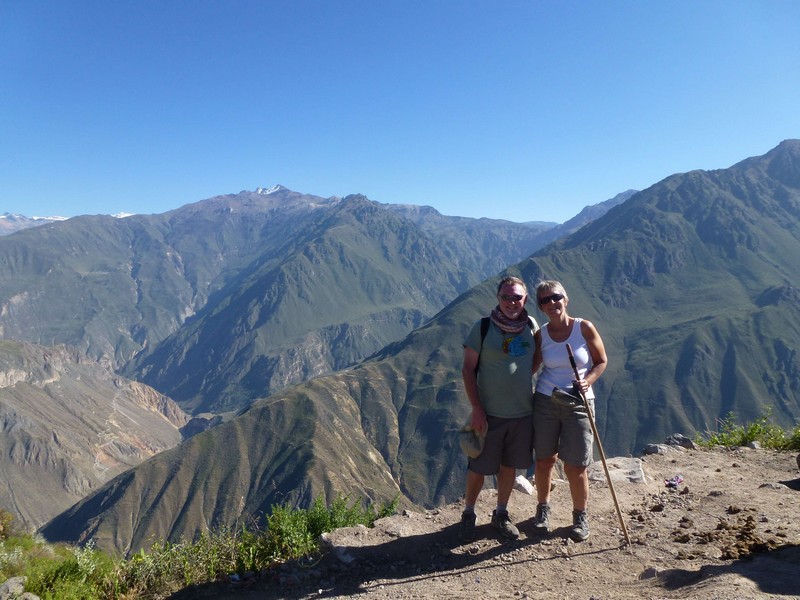
The going underfoot is pretty loose, so we take it steady, although the locals more or less run down, wearing sandals rather than walking boots.

Fortunately, we have mules to carry our spare underwear and the like.
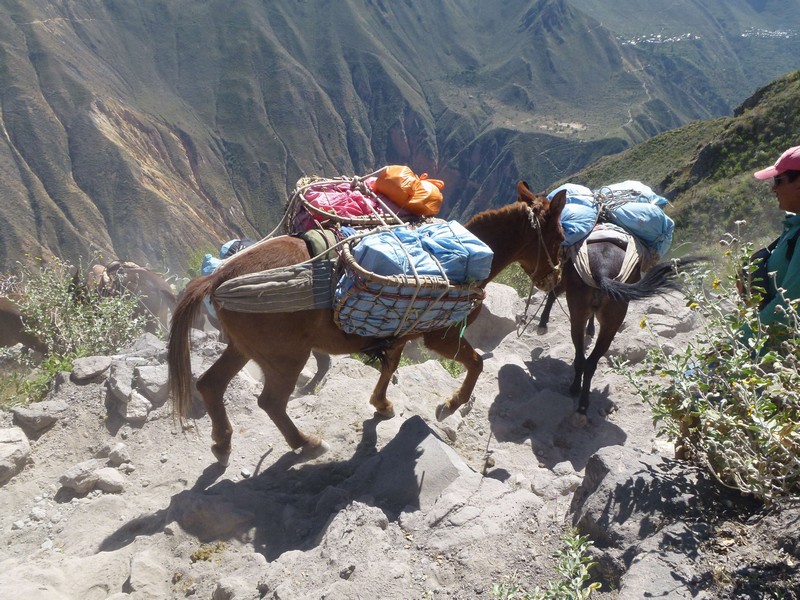

Eventually, the river appears below us, and the little flat area where we will camp. It’s 1200 metres from top to bottom.
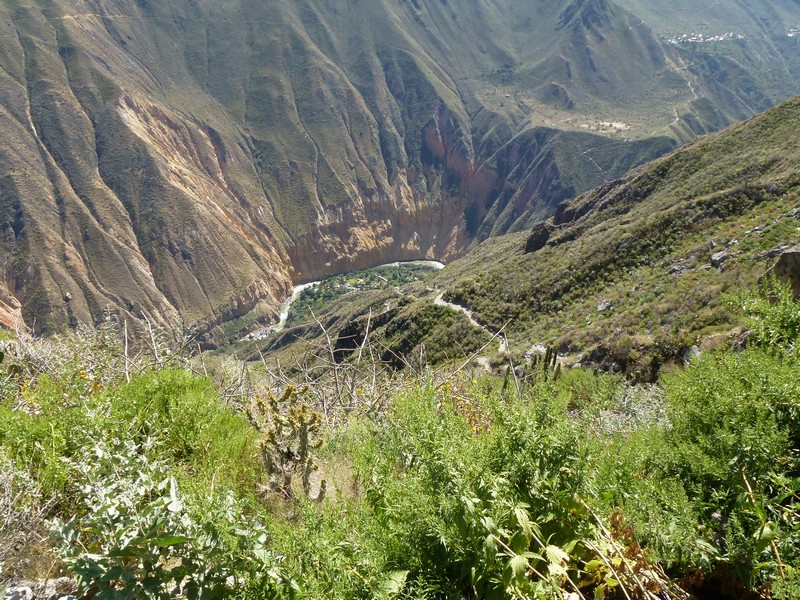
Diane’s wondering whether she can stand a cold shower.
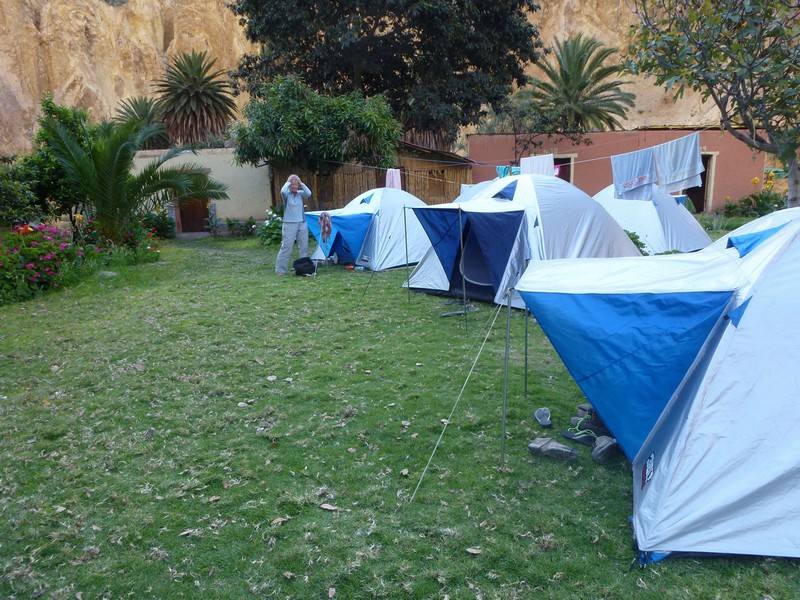
As it happens, she can, and she can also read my kindle in a hammock, it would seem.
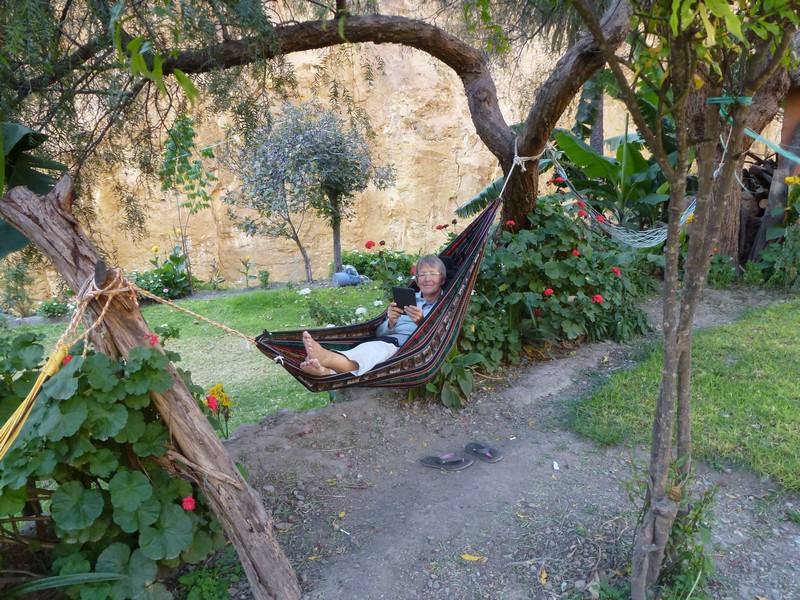
The stars and the moon that night are absolutely fantastic. The next morning, we are up at 4am, yes, four o’clock in the morning, for the walk back up, so as to arrive at the top before the sun is too hot. About half-way up, the sunrise reaches the peaks on the other side of the canyon.

Three hours of trudging later, we are back on the top. A fantastic walk, if slightly painful for the calves.
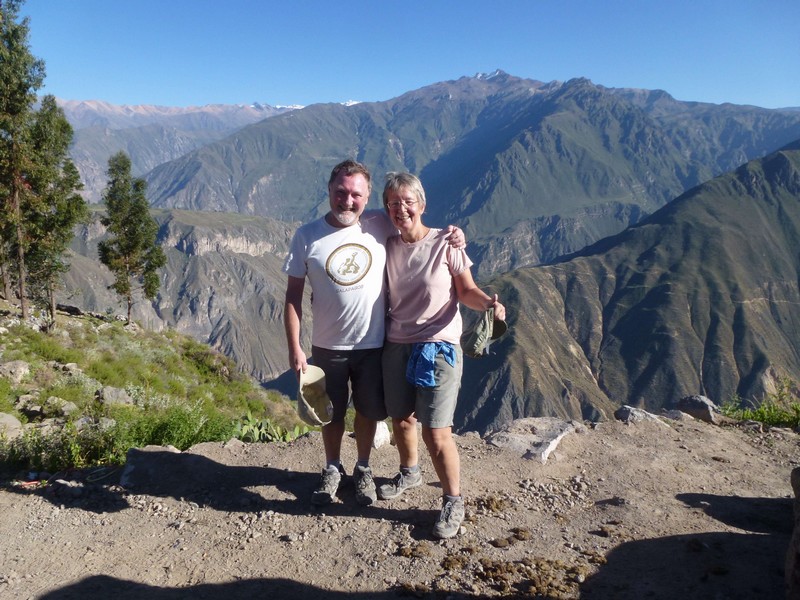
Then it’s back to Arequipa, and a well-deserved pisco sour.

Off to Cusco now, on the overnight bus. We’re taking a 5-day trip into the Amazon rain forest, and then going to Machu Picchu and the Sacred Valley. Can’t come to Peru without seeing Machu Picchu !

WONDERFUL!
I like the look of that hammock. And the dry wit in the caption.
Fab photos as usual. That might be as close as I get 🙁
Have you read Dervla Murphy “Across the Andes on a Donkey” (or similar)? She ends up in Cuzco.
Stunning